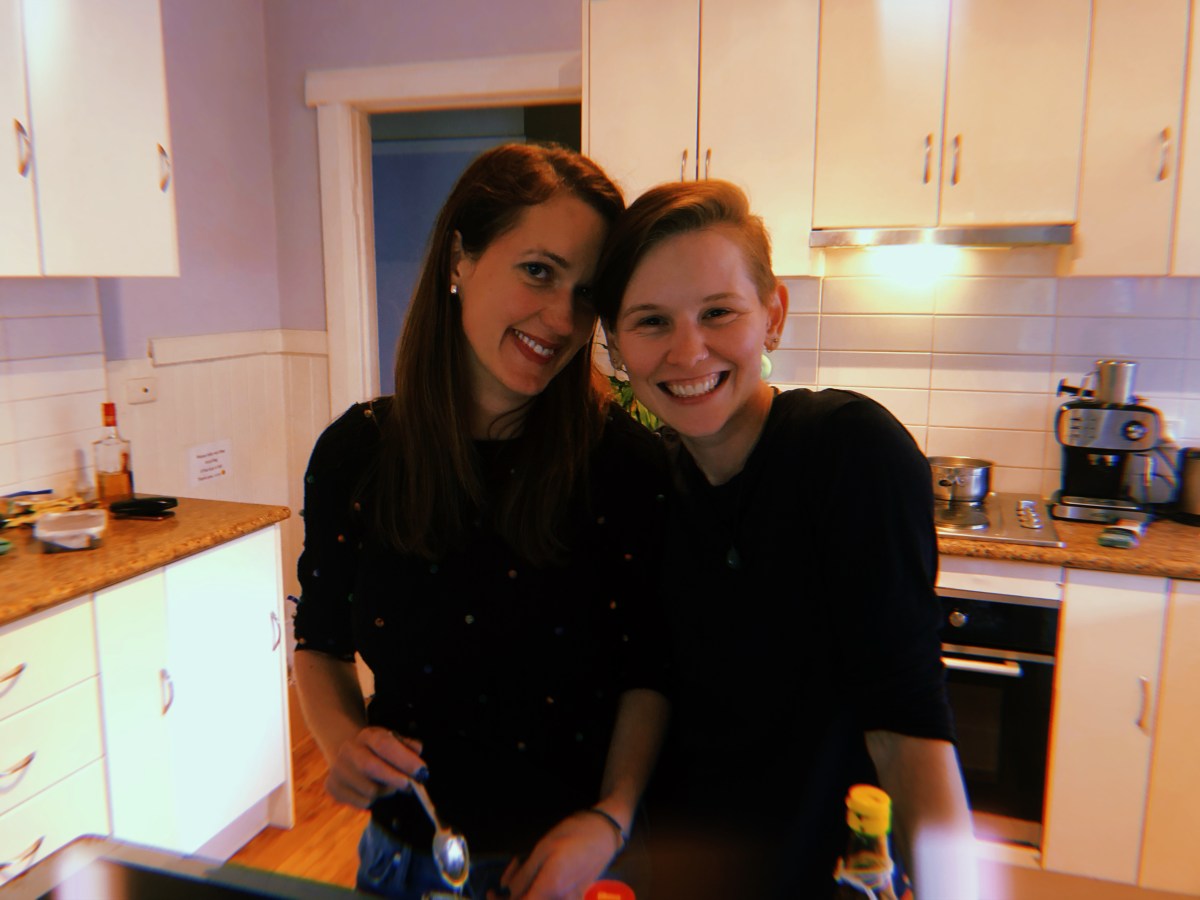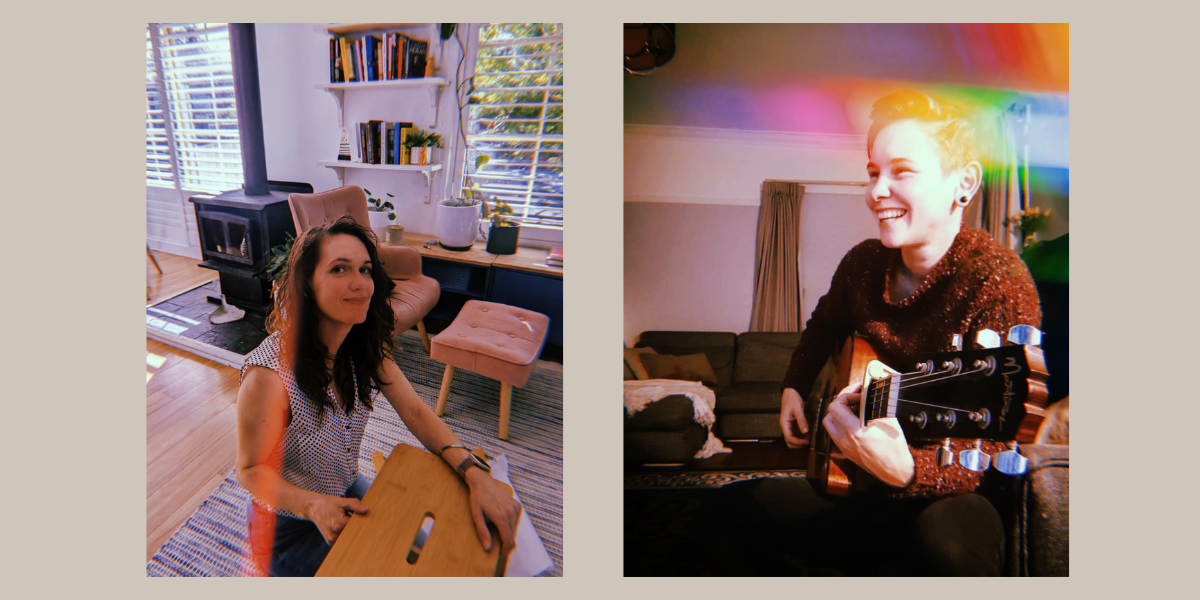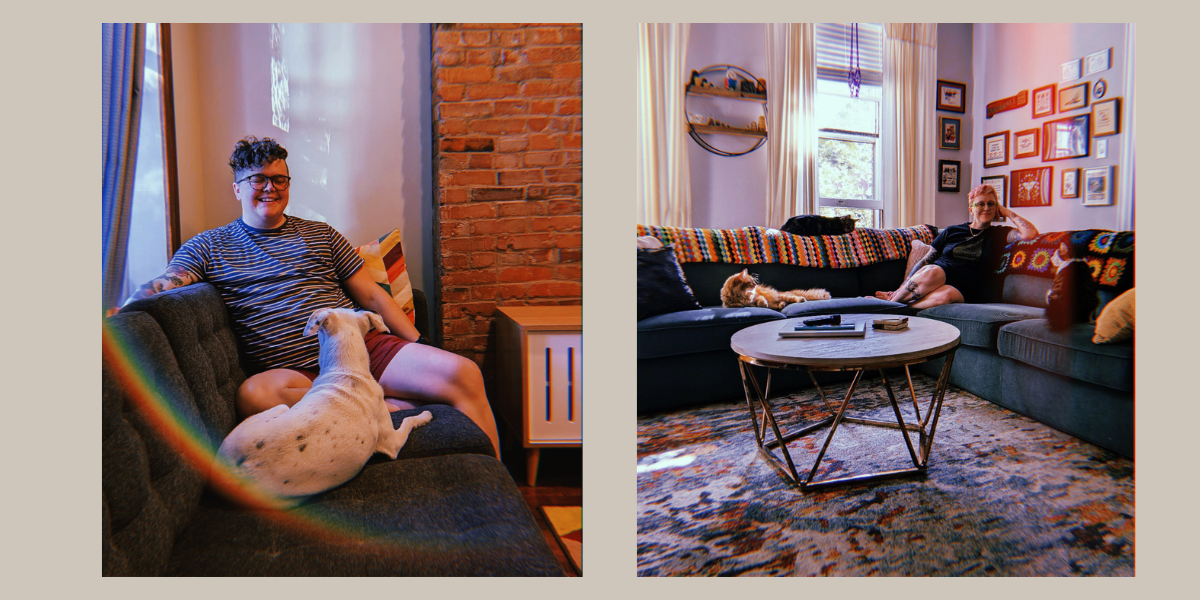In 1988, comedian and actress Lea DeLaria first told the joke, “What does a lesbian bring on a second date? A U-Haul.” Decades later, it remains a popular and frequently referenced part of queer culture. It’s part of the overall stereotype of lesbians as emotionally intense, quick to fall in love, capable of week-long first dates, and quick to make it official by moving in together. Celebrities like Hayley Kiyoko and Jojo Siwa are two of the many queer people on the internet to identify with the term. A recent survey by the HER dating app found sapphic couples move in together after an average of 5.6 months of dating — a number that can’t possibly be entirely true, but is remarkable to consider as being true even of a self-selecting sample.
However, just as queer people have always pushed back against traditional heteronormative expectations, we also love to push back against our own community stereotypes. Not that U-Hauling is inherently wrong as a practice — and it’s very often motivated by very logical financial pressures, rather than emotional whims (we’ll talk more about that later) — moving in with someone you’ve only recently met is inherently risky. As Krysta Burton wrote in the seminal Autostraddle piece To U-Haul or Not to U-Haul? Almost Definitely Not, “don’t move in with your lovah if you’ve only been dating for three or four or five or seven months. It will most likely fuck with your relationship and you will probably break up from the stress of it, unless you’re a couple in a million… a new relationship is not ready for the responsibility and day-to-day work that living together entails.”
These days you see a lot more queer people prioritizing baby steps and boundaries in their relationships —and a rising tide of lesbians who aren’t just against U-Hauling, but are against moving in together at all. Anti-Haulers, if you will. While they may live close to their partners —on the same block, or a quick drive away —they maintain separate spaces, and hope to do so indefinitely. For “living-apart-together” couples, or LATs, it’s an intentional choice that they feel enhances their relationships.
Living separate from a partner isn’t new, but it is being talked about more —in the past two years, trend pieces on the topic have popped up on Brides, The Ethel and Good Housekeeping, among others. But these pieces tend to focus on straight people, and, considering community stereotypes, it might be hard to imagine this growing in popularity amongst queer women. But when Autostraddle published an advice post from someone who feared they’d never want to live with their partner, the response was overwhelming —so many queers extolling the virtues of their own “permanently living apart” arrangements.
“My partner and I have been together 21+ years and we have never lived together,” wrote one reader. “It’s probably why we have been together so long. We enjoy each other’s company but it is also nice being able to have separate lives as well and we trust each other completely.”
“My great aunt had a partner who lived in Maine, and she lived in NYC. Half the year they lived alone at home, the other half they lived together in alternating locations. It worked for them,” wrote another. “Make your own rules.”
Sharon Hyman, a queer Canadian filmmaker, has lived apart from her husband for 25 years. She coined the term “apartner” to reference committed partners who live apart. Two decades ago, she was finding LAT communities hard to come by, and so she started her own apartners Facebook group. Today, the group has over 7,000 members.

Sarah Hyman
Hyman and her husband live 15 minutes apart in Montreal. They have opposite personality types, different work schedules, and both simply desired their own space. Living apart was an easy choice for them, and one they’ve never regretted. “When you think about significant issues in a relationship, a lot of time it’s over silly stuff. We don’t have to fight about the small things like picking up socks or doing the dishes. Instead, we can focus on what’s important, like being mentally available and supportive when we need it most.” Now that they’re retired and despite living apart, they spend most of their days together.
Hyman actually credits the “apartners” lifestyle to the queer community. While some lesbian couples famously lived together as “roommates” while keeping their relationship a secret (see: Boston Marriages), many others couldn’t live together without outing themselves. “Queer people are at the forefront of living apart relationships and are pioneers in this area,” she states. “For them, being an apartner was not always by choice. By doing so, they had to hide and reinvent the structure of what constitutes a legitimate relationship.”
Tasmania-based couple Lauren Watson and Jess Yasuda were both married to other people before they started seeing each other. Their choice to live apart stemmed from both Watson and Yasuda having three separate children from their marriages and enjoying the freedom they gained by living independently.

Lauren Watson and Jess Yasuda
Their current routine consists of spending one night a week at each other’s place when they have the kids and every other weekend together, kid-free. Although they find it difficult not to see each other more consistently, they feel the pros of their living apart lifestyle heavily outweigh the cons. “We get to be independent and live our lives in our own houses on our terms. There’s no arguing about stacking the dishwasher or whose turn it is to take the rubbish out,” Watson shares. For them, distance has improved aspects of their lives in unexpected ways. “Living apart really helps keep our sex life passionate and fresh. Just putting our arms around each other after a week apart feels incredible.”
Watson and Yasuda live an hour apart and have no plans to move in together anytime soon. They also completely separate their finances. They’ve noticed that because of this, people think their relationship is “less serious,” but to them, it’s the complete opposite. “Perhaps it’s true that not being together daily helps us focus on the good stuff we have. We don’t think this makes our relationship any less genuine or committed, or our love less real than a couple who live together and are constantly annoyed by each other’s habits,” Watson notes.
Within the lesbian community, there can be pressure to be constantly together—a sort of “urge to merge,” Watson shares. U-Hauling is often played out as a joke, but it’s often a result of a dynamic that is already toxic or harmful. The lesbian community often values this intense closeness, where couples spend all their time together—a dynamic that Watson and Yasuda find particularly unappealing. “We like to think that by rejecting this stereotype, we’re showing another example of how a healthy, committed, and passionate lesbian relationship can look,” Watson tells Autostraddle.
The couple just celebrated their second anniversary together.

In their separate spaces: Jess Yasuda and Lauren Watson
Many queer couples in the public eye, like Annie Leibovitz and Susan Sontag, and Holland Taylor and Sarah Paulson, have long been known for their living-apart lifestyle. Taylor and Paulson recently addressed their situation at the 2024 Emmy Red Carpet with ET. “We don’t own a home together, but we are together more often than not,” Holland shares. “We’ve been together for a long time now, and I think part of it has to do with we’re together when we wanna be, and we’re not when we don’t.” Taylor and Paulson have gone viral more than once for sharing that piece of themselves with the public.
While many queers celebrate and admire relationships like Taylor and Paulson’s, it’s also one clearly enabled by material wealth.
It’s possible more people would choose to be “apartners” if they had the option, but this lifestyle comes with a financial privilege that most don’t have access to — especially young queer folks, who, despite making more than previous generations, are paying 31 percent more for housing than people were a decade ago. They’ve also got more debt and are spending more on essentials. LGBTQ+ adults, specifically, are even more vulnerable to financial hardship.
While many commenters on the aforementioned Autostraddle advice instagram post shared stories of successful apartnerships, much of the commentary also centered on finances, with comments like “sounds expensive,” “Who can possibly afford to live alone,” and “In this economy?” These arguments are fair.
Sharing space with a partner is sometimes the only way people can afford to live at all, and most “moving in together” stories include some element of financial need. While U-Hauling is often described as an emotionally impulsive choice, it’s quite often an economical one. Earlier this year, The New York Times wrote about growing numbers of young straight couples moving in together early in their relationships to reduce their housing and living costs. A Realtor.com study found over half of Gen Zers saying that “saving money by splitting the rent/mortgage” was a contributing factor to their choice to cohabitate.
Irma Clement and her partner, Giselle Pemberton, are amongst those couples who could make the choice to live apart due to strong financial circumstances. They met 22 years ago. At the time, Pemberton was was in the process of buying her first home, and Clement encouraged her to do so, rather than beginning to plan for cohabitation. Two decades later, neither woman wants to sell their New Jersey home to move in with the other. They remain apartners, a 30 minute drive apart.

Irma Clement and Giselle Pemberton
Clement, a retired tax attorney and certified public accountant, retired at 46 with 1.1 million in savings and has been traveling full-time ever since. She and Pemberton keep their finances separate. “Money has never been an issue for us, which is to our benefit and allows us to live the way we do,” Clement shares. “We really don’t know many people in our situation.”
Currently, as Clement travels full time, Pemberton works as a doctor of public health and joins her on trips whenever she can. Their apartner lifestyle allows them to have their own lives while sharing all the important things. They text each other every single day, no matter the time zones they’re both in.
Meanwhile, Hyman and her partner secured rent-stabilized apartments in Montreal years ago, allowing them to remain “apartners” for life without worrying about rising rent prices.
“Living together” is such an accepted relationship norm that many don’t realize there are other options out there. Hyman shares that many individuals who discover her group and reflect on their past relationships often express that their divorces might have been avoided had they known partnerships like this existed. As an apartner for over two decades, the number one thing she stresses to people is not that everyone should be an apartner but rather everyone should understand that alternative relationship styles exist. Still, some people are skeptical, claiming this lifestyle is for unfaithful people who want the freedom to cheat. “I hear it all the time,” Hyman shares. “A lot of people think apartners are cheating on one another, but that’s simply not the case.”
As lesbians and queer people are fed dynamics such as Uhauling within our communities, going outside of them can be challenging. A Dutch commenter (@p33p) on our Instagram post about this topic noted this cultural difference: “I was shocked when I moved to the US, and my then girlfriend immediately assumed I would merge my life with hers completely. She saw it as a lack of commitment, and I think she was just very insecure, but if you can talk through these things together, you should be able to come up with alternative relationship forms.”
Cohabiting requires compromise and the ability to navigate shared space, which is not always easy. The responsibilities, differing preferences, and endless chores that need constant attention. For some, the need for personal time should not be misinterpreted as a lack of commitment or even interest in the relationship. Spending time apart can enhance a relationship and recharge batteries so one can be a better partner. The best part is these structures can change over time. Even couples who live together can choose to live apart if it’s what’s most beneficial to them.
Amanda Leone and Mack Williams, a polyamorous queer couple in St. Louis, started as a typical U-Haul relationship, living together for four years.

Amanda Leone and Mack Williams
During the pandemic, Williams, diagnosed with autism, realized they needed their own space to self-regulate and manage their mental health and brought up the idea of living apart. Leone, who enjoyed living with Williams, worried this shift could be the end of their relationship. “It felt like a way to break up without having to say that’s what was happening,” Leone shared. After a lot of therapy, both individually and together, the couple decided to “de-nestify,” as they call it, and find places of their own to live a 15-minute drive apart.
Besides the extra chores and the pets they split up, they’ve found that living apart has been a positive change, allowing them to communicate and hold space for one another in even greater ways than they had at the beginning of their relationship. The couple feels going straight from u-hauling to living completely separate has allowed them to challenge what a heteronormative view of a relationship is and “queer” their relationship even more than they knew was possible.

Mack Williams and Amanda Leone, in their separate spaces
The anti-uhauling, apartner, living apart together relationship model isn’t for everyone. There are plenty of U-haul success stories out there. Many couples find great joy in sharing a kitchen together. Some are willing to sacrifice extra closet space if it means waking up next to the person they love.
Watson and Yasuda say living apart can be very difficult at times, but they’ve done a lot of work in therapy after their divorces, allowing them to feel secure with their current distance from each other. “Sometimes we do miss each other a lot, and it can be hard, but we know it’s really important to communicate our insecurities without judgment and take responsibility for your emotions,” Watson shares.
As Hyman and her partner age, she’s coming to terms with the fact that, eventually, they’ll need to move in together due to various medical needs. Living together will give them the support they need to take care of each other. Today, they are grateful for the space they still have.
Pemberton, on the other hand, is currently the primary caregiver for her father, who became paralyzed during the pandemic. Since he lives with her, Pemberton and Clement often spend time together at her home—about 90% of the time. As Pemberton and Clement age, the possibility of cohabitation may become more present for them than it is today.
Leone and Williams are actively planning to live together again. In a perfect world, they would purchase a duplex and live separately in two units. For them, having separate routines but sharing chores and pet care is ideal.
Queer people have always been at the forefront of rejecting society’s meticulously crafted molds and are a great example of showing there’s not just one way to “do life.” It’s the essence of what being queer means—far beyond who’s in your bed. Now, they’re battling the stereotypes within their communities and rejecting how they’re expected to be queer.
Normalizing stereotypes like U-Hauling can pressure couples to fit a narrow idea of commitment, overshadowing what may feel best for a partnership, but no matter the cultural lesbian traditions of the past, lesbians do not need to subscribe to the same scripts of those who came before them. As queer people know, nothing is permanent, and nothing is prewritten. If that means a future living in a duplex with your partner rather than renting a U-haul because it will make you happy, then, by all means, become the duplex lesbian you were always meant to be.



Love this! I’m not planning on ever dating again at all (joyfully aroace over here!) but if for whatever reason I did, I would NOT want to cohabitate again.
For me this is one of the best things I have read here. Thank you for covering this up so well.
Omg yay it’s not just me! My besties are a major uhaul success story, and for a long time I felt like I was ‘wrong’ for not wanting to ever live with a partner. This article is validating as hell and comes at exactly the right time :)